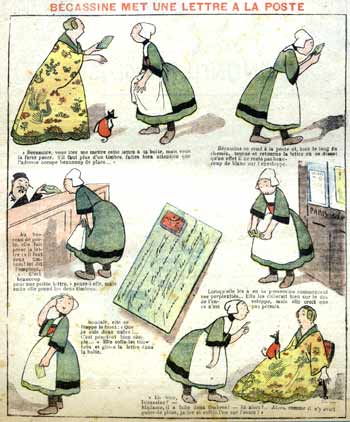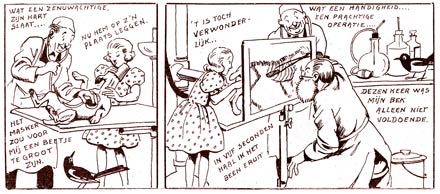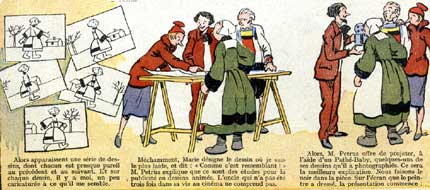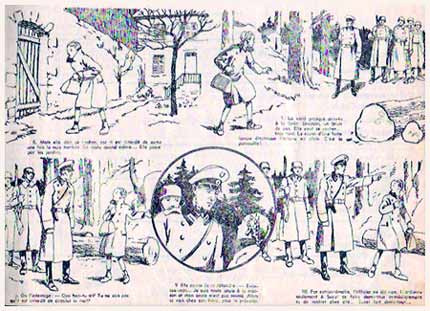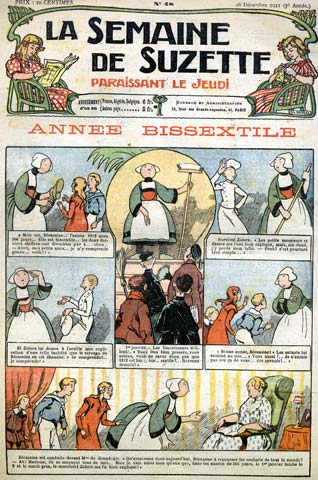'Bécassine'.
Émile-Joseph Porphyre Pinchon started painting at an early age and became the pupil of Cormon and Albert Besnard. His work was exposed in the annual salon of the National Art Society in 1893. For financial reasons, he decided to become an illustrator for the press, and his first drawings appeared in Le Petit Journal de la Jeunesse in 1904. His most important comic work is 'Bécassine', which he started in the first issue of the magazine La Semaine de Suzette in 1905, based on a script by Caumery (pseudonym of Maurice Languereau). This series, which appeared in a collection in 1913 by publisher Gautier-Languereau, became an enormous success.
'Bécassine'.
Pinchon also worked for other magazines, such as Le Saint Nicolas, l'Écho de Paris and La France, creating the comic 'Frimousset' together with writer Jaboune, in 1920. Until the Second World War, he worked for the children's magazine Benjamin, where he created 'La Famille Amulette' and 'Grassouillet' strips, again with Jaboune.
'Olive et Bengali'.
During World War II, Pinchon was present in Fillette and Fanfan la Tulipe. After the war, Pinchon started a collaboration with Belgian magazine Wrill, for which he created comics like 'Gilles du Maquis', 'Gringalou', 'Olive et Bengali', 'Suzel' and many others. He revived 'Frimousset in Le Petit Canard in 1946 and additionally worked for France-Soir Jeudi ('Patounet, Giboulard et Cie', 1946-47), Sabord (1947-49), Âmes Vaillantes (1948-49) and Lisette (1950).
'Bécassine Cherche Un Emploi', by Émile-Joseph Pinchon, translated: "Bécassine Looks For A Job."
Then a series of drawings appear, of which every one is almost similar to the previous and to the following. And on every drawing, it's me, a little bit caricaturized, so that it resembles me.
Nasty, Marie points out the drawing on which I am most ugly and says: "That one resembles you." Mister Petrus explains that these are drawings for animated cartoons. Uncle, who has only been to the cinema three times, doesn't understand a thing of it.
Mister Petrus offers to project some of his photographed drawings with the aid of a 'Pathé-Baby.' That'll be the best explanation. We put the negative in the machine. On the screen, that the photographer has set down, the show begins.
'Suzel', from Wrill, 1946.
Émile-Joseph Pinchon was an important pioneer among the French-Belgian comic artists, working in a pure, realistic style. His art style later inspired the Ligne Clair ('clear line') style, of which Hergé was one of the most important representatives. He also influenced Marijac .
Pinchon died in 1953, but is clearly not forgotten: in 1988, the museum of Noyon dedicated a large exhibition to his life and memory.
'Bécassine', from La Semaine de Suzette.



